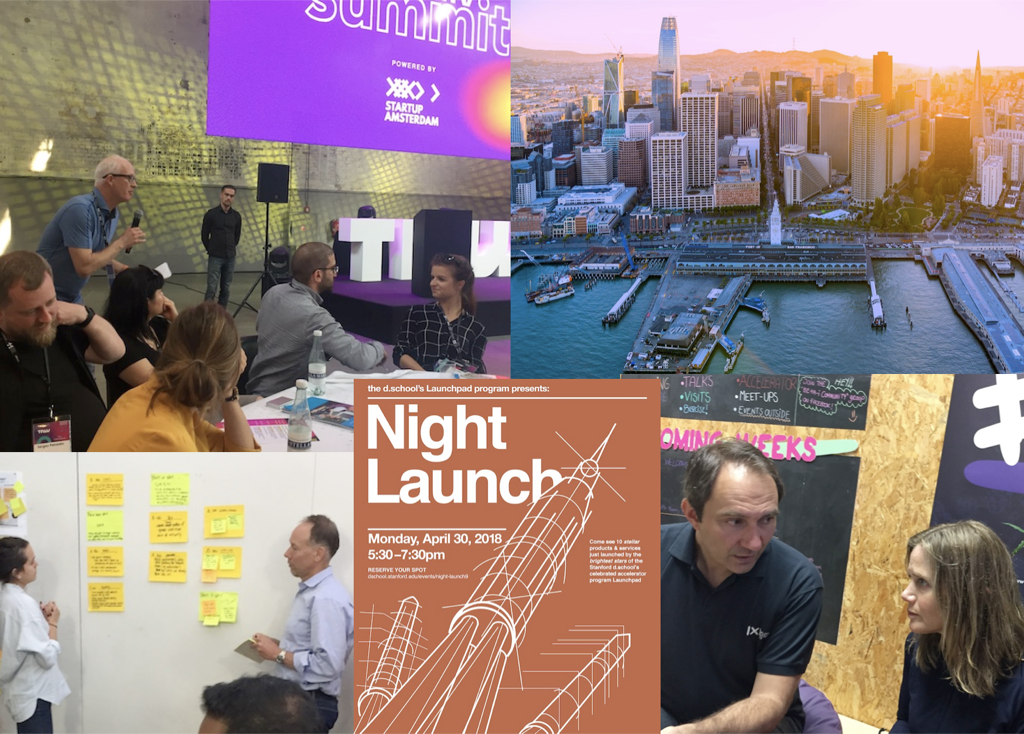
We call this the year of the ecosystem. There’s a race on to attract talent and develop fresh ways to spark ideas and build thriving new enterprises. No borders or walls can hem in this creativity. We traced the globe in our search, journeying to twelve countries, studying these booming epicenters, starting with elite university programs like Stanford Launchpad to the cities vying for primacy – Lisbon, Amsterdam, Tallinn, Paris, and, of course, back home in San Francisco. At every turn, we encountered ecosystem builders, startup founders and innovators demonstrating what makes their city, university, or incubator a unique place to start and scale.
Last winter and into the spring, we had a front-row seat to the action at one of the most iconic proving grounds for startup founders, Stanford Launchpad at the d.school. Night Launch is the accelerator’s version of what many programs call Demo Day. The difference? It’s just halfway through the class, forcing students to prototype even faster, before this fateful night when they suddenly find themselves face to face with swarms of potential customers and investors.
By May we were back on our globe-hopping ecosystem exploration, kicked off with a visit to Lisbon’s hottest incubator Beta-i. Ideally positioned on Europe’s sun-drenched West Coast, Lisbon is gaining momentum as a hip tech hub and startup ecosystem fueling the global entrepreneurial boom. Lisbon caught startup fever early, thanks to Beta-i’s influence during the 2010 economic bailout. As Co-Founder Ricardo Marvão recalls, “People were like, okay, if you can’t find a job, create your own.”
Later that month we flew off to Amsterdam to participate in the StartupCity Summit, an invitation-only conference for mayors and ecosystem-builders, led by Ruben Nieuwenhuis and Bas Beekman of Startup Amsterdam. The message? To attract startups to your city, shed governmental, bureaucratic ways of operating and be more startup-like. Co-create. Brainstorm, prototype, share, network. Startup cities catch fire when they grow from a bottom-up model that fuels dynamic tribes.
In September, the venerable UK-based The Economist took aim at our home city and pulled the trigger, in a cover piece entitled Peak Valley: Why Startups are Going Elsewhere. Is the Golden State’s entrepreneurial party over? Not by a long shot. We deconstructed the misleading metrics and revealed the truth. Foreign and national companies continue to launch corporate accelerators and innovation centers in the Valley. We’re not just talking Y Combinator and Plug and Play, but creative, independent, private and government-funded international outposts that incubate startups, offer pilot opportunities, and have a lot to teach US innovators.
At Web Summit this November, we just said no to passively listening to canned pitches from founders. We prototyped our new diagnostic to assess whether a startup has What It Takes (WIT). Borrowing a page from Stanford Launchpad, we brought our Year of the Ecosystem full circle with these secrets to bringing energy and focus to a startup. Hint: it’s about Customers, Pain, Targeted Features, and Sales. We’ll take the WIT Test on the road to CES in January.
Happy New Year!


